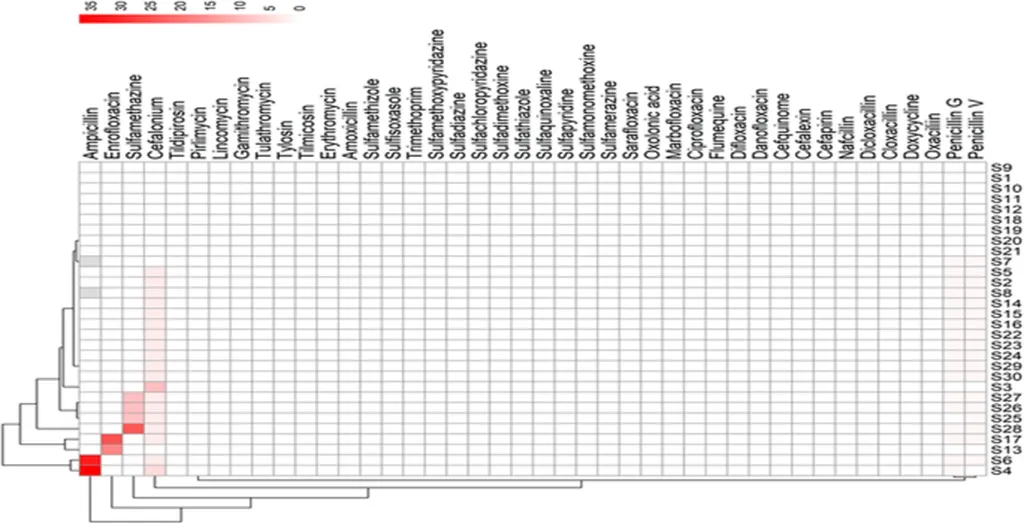In the heart of Botswana, a groundbreaking study has shed light on the presence of antibiotic residues in a popular food item, offering critical insights that could reshape food safety protocols and agricultural practices. The research, led by Koketso Motlhanka from the Department of Animal Science at the Botswana University of Agriculture and Natural Resources, has quantified antibiotic residues in green edible beef offal, commonly known as tripe, sourced from abattoirs and butcheries in Gaborone. Published in the journal *Food Safety and Risk*, this study marks the first of its kind in Botswana to employ advanced LC–MS/MS technology for such an investigation.
The study analyzed 30 tripe samples, revealing trace amounts of doxycycline in all samples, with cloxacillin and penicillin G detected in 37% and 23% of the samples, respectively. Notably, higher concentrations of ampicillin and enrofloxacin were found in specific samples, with ampicillin present in samples S4 (36.9 µg/kg) and S6 (32.4 µg/kg), and enrofloxacin detected in S13 (17 µg/kg) and S17 (24.7 µg/kg). Sulfamethazine was also identified in sample S28 at 23.8 µg/kg. Despite these findings, all detected levels were below the maximum residue limits set by regulatory authorities.
“This study underscores the importance of monitoring antibiotic residues in food products to ensure consumer safety and mitigate the risk of antibiotic resistance,” Motlhanka emphasized. The findings suggest that longer withdrawal periods before slaughter could be beneficial, allowing antibiotics to be eliminated from animal tissues more effectively.
The commercial implications of this research are significant for the agriculture sector. As consumer awareness about food safety continues to grow, the detection of antibiotic residues, even at trace levels, could influence purchasing decisions and market dynamics. Farmers and abattoirs may need to adopt more stringent protocols to ensure that antibiotics are used responsibly and that adequate withdrawal periods are observed.
Moreover, the study highlights the need for continued investment in advanced analytical technologies like LC–MS/MS, which can provide precise and reliable data on antibiotic residues. This technology not only enhances food safety but also supports the agricultural industry in meeting international standards and regulations.
As the global community grapples with the challenges of antibiotic resistance, studies like this one are crucial in shaping future developments in food safety and agricultural practices. By understanding the prevalence and levels of antibiotic residues in commonly consumed foods, stakeholders can make informed decisions that promote healthier outcomes for both consumers and the agricultural sector.
The research led by Motlhanka, published in *Food Safety and Risk*, serves as a pivotal step in this direction, offering valuable insights that could drive policy changes and industry practices in Botswana and beyond. As the agricultural sector continues to evolve, the integration of advanced technologies and rigorous monitoring will be essential in ensuring the safety and quality of our food supply.

